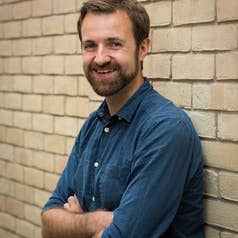
Christian Yates
I'm a Senior Lecturer in Mathematical Biology and also an author. In my first book, the Maths of Life and Death (https://amzn.to/2MkmdcM) I explore the true stories of life-changing events in which the application (or misapplication) of mathematics has played a critical role: patients crippled by faulty genes and entrepreneurs bankrupt by faulty algorithms; innocent victims of miscarriages of justice and the unwitting victims of software glitches.
I follow stories of investors who have lost fortunes and parents who have lost children, all because of mathematical misunderstanding. I wrestle with ethical dilemmas from screening to statistical subterfuge and examine pertinent societal issues such as political referenda, disease prevention, criminal justice and artificial intelligence. I show that mathematics has something profound or significant to say on all of these subjects, and more.
Rather than just pointing out the places in which maths might crop up, I also try to arm the readers with simple mathematical rules and tools which can help them in their everyday life: from getting the best seat on the train, to keeping one’s head when on the receiving end of an unexpected test result from the doctor. I suggest simple ways to avoid making numerical mistakes and gets his hands dirty with newsprint when untangling the figures behind the headlines. I also get up close and personal with the maths behind consumer genetics and display maths in action as I highlight the steps we can all be taking to help halt the spread of deadly diseases.
For my day job I work on a diverse range of areas of Biology in which randomness plays an important role.
I have studied the migration behaviours of cells in order to understand early embryonic diseases and the collective behaviour of locusts in order to help prevent outbreaks. I have worked to understand how ants make their descisions as a group and modelled how parasites can effectively evade the immune system.
I have developed frameworks for better representing evolutionary game theory and tools for tracking the movement patterns of bacteria. I have even tried to demonstrate how birds' eggs and zebrafish get their beautiful patterns.
Who knew that Maths could be so useful?
